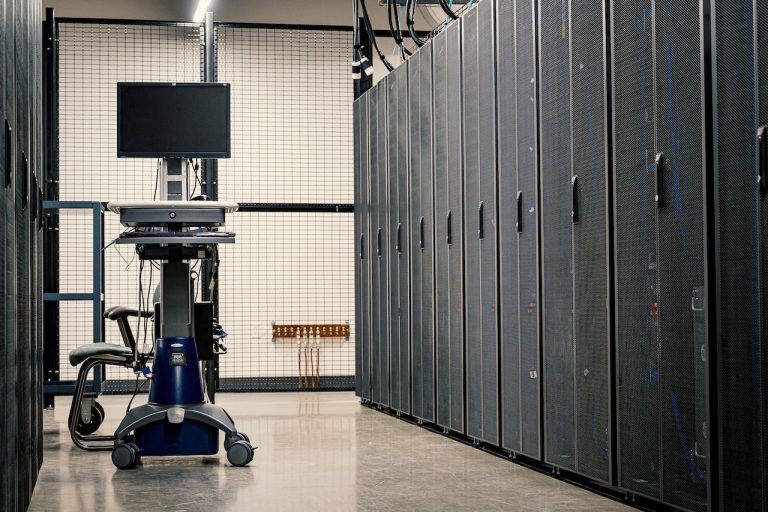Secure Data Destruction Best Practices
The unprecedented cyberattack surge has put businesses under tremendous pressure to protect their data during and after its lifecycle. Secure data destruction is a key element of data protection after a data lifecycle. It’s a process that permanently destroys data to render it utterly irrecoverable.
The fundamental idea behind it is to ensure business data is not handled by individuals with malicious intentions. This is a key responsibility for all businesses because any failure to ensure secure data destruction increases certain risks, such as:
- Fraud
- Identity theft
- And corporate espionage
To help you minimize such risks, this post examines six best practices for secure data destruction.
Best Practices for Secure Data Destruction
Secure data destruction is beyond pressing the delete button or formatting systems to erase data. It requires a well-defined process that involves strategic practices that include the following:
1. Creating an Information Policy on Data Destruction
Information policy on data destruction is a formal document that contains carefully curated details on the proper destruction of data that has outlived its usefulness. Creating this document is crucial for organizations to ensure secure data destruction. It must contain specifications on what employees must destroy, when and how they should destroy them.
Additionally, the information policy must include multi-layered checkpoints that confirm all the provisions of the policy are observed in the letter. Doing this helps in so many ways. For instance
- It enables business organizations to safeguard against data leaks consistently.
- It also helps to maintain compliance with data protection regulations and laws.
Such culture improves how your organization interacts with data.
2. Establishing Precise Retention Periods
Every business collects data to enhance key areas of business processes. The organization retains this data for a certain period before it becomes useless. For the purpose of achieving secure data destruction, organizations must establish precise retention periods for different types of data.
It helps not to retain data longer than is necessary. Excessive amounts of data consume storage resources and limit the efficiency of your systems.
While you’re at it, ensure you research before establishing a retention period for your data. Although some organizations in specific industries have legal requirements for preserving data, not all companies prioritize this culture. If your industry doesn’t, ensure you do due diligence.
3. Implementing Shred-all Policies to Safeguard Data
Shredding is a data destruction method that’s effective for permanently destroying all data that have reached the end of life. This may include paper records, files, SSDs, hard drives, and other assets like cell phones, tablets, optical drives, thumb drives, and motherboards, among many others. When you initiate this data destruction method, it must contain all forms of data.
Shred-all policies are ideal for organizations seeking secure and complete destruction of all necessary items. Companies that don’t want employees to decide which data should be destroyed because of its sensitivity find it beneficial.
4. Cleaning Cloud Storage
Cloud storage is an efficient and trendy storage type many organizations use today. However, it’s important for organizations to remember two crucial details when using it. First, destroying personal data doesn’t mean the data has been completely destroyed. Secondly, you don’t own the physical infrastructure of your data hosting company.
So you must channel efforts towards completely deleting all data, including those in cloud storage. The first step towards ensuring this is to pick a cloud service company whose terms and conditions of services align with your data destruction standards.
You can ask them about how they delete, overwrite, and destroy data before working together. This would help you determine whether they’ll comply with your demands whenever the need to destroy data arises.

5. Researching Vendor-Supplied Data Destruction Services
Getting a third-party data destruction service provider is a great way to commit your data destruction exercise to professionals. But before you partner with any company, ensure you conduct a thorough vendor investigation before you finalize the agreement terms. The most important thing to look out for is R2 certification.
It’s proof that certifies that the ITAD partner you intend to choose follows regulatory standards guiding the industry. Additionally, you must manage relationships with your vendor to ensure seamless implementation without unpleasant eventualities.
6. Acquiring and Maintaining Proofs of Data Destruction
One proven way to reduce liability is to ensure proper and consistent record-keeping. Regarding data destruction, ensure you acquire certificates that prove the destruction occurred using secure data destruction methods. The reason for doing this is to stay safe in case your organization gets sued due to a data breach.
Getting these documents ensures your organization’s data destruction plan is secure and reliable, giving you peace of mind. However, as much as you acquire the documents, ensure you keep the records. You can store records on the cloud and the cloud will automatically update them with new additions, requiring minimal human involvement.
PARTNER WITH AN ITAD PROFESSIONAL
You can get a secure data destruction service by partnering with an ITAD company. They will leverage their expertise to offer you secure data destruction that follows industry best practices. This will help you achieve an absolute and irrecoverable destruction of data you no longer have use for.
Contact GCI now for an ITAD partner to guarantee smooth, legal, and safe data destruction.
or call 770-886-4200
